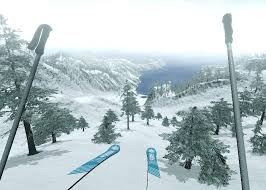Another augmented simulation framework created by Microsoft specialists gives clients a chance to stroll through this present reality while completely inundated in a virtual one — utilizing a versatile VR headset and a variety of sensors to recognize snags and adjust the advanced scene to the encompassing condition as they go.
Called “DreamWalker,” the Microsoft Research model is one of the ventures to be exhibited by the organization in New Orleans this week at the ACM Symposium on User Interface Software and Technology (UIST) 2019. It’s the most recent case of the organization’s longstanding work in virtual and enlarged reality applications.
“Provided with a real-world destination, DreamWalker finds a similar path in a pre-authored VR environment and guides the user while real walking the virtual world,” the researchers explain in their paper.
“To keep the user from colliding with objects and people in the real-world, DreamWalker’s tracking system fuses GPS locations, inside-out tracking, and RGBD frames to 1) continuously and accurately position the user in the real world, 2) sense walkable paths and obstacles in real time, and 3) represent paths through a dynamically changing scene in VR to redirect the user towards the chosen destination.”
They compose that they exhibited the frameworks flexibility by “enabling users to walk three paths across the large Microsoft campus while enjoying pre-authored VR worlds, supplemented with a variety of obstacle avoidance and redirection techniques.”
In their testing, they clarify, “8 participants walked across campus along a 15-minute route, experiencing a virtual Manhattan that was full of animated cars, people, and other objects.”
Scientists on the task are Stanford University PhD understudy Jackie Yang, who chipped away at the venture as a Microsoft Research assistant; alongside Microsoft specialists Eyal Ofek, Andy Wilson, and Christian Holz, presently an ETH Zürich educator. Here’s their full paper.
Related activities to be appeared by Microsoft at the gathering incorporate another eye-following innovation that changes components of a scene when the client isn’t looking, and another haptic input controller that “uniquely emulates the human sense of touch,” as clarified in this Microsoft post about the undertakings.
While these aren’t undeniable items, Microsoft research can illuminate and rouse the course of the more extensive organization. Microsoft is engaged with expanded reality for an assortment of business applications through its HoloLens headset, and Windows Mixed Reality headsets made by the organization’s equipment accomplices.
Hueman Donaldson is an author and public speaker. He graduated with a dual degree in Business Administration and Creative Writing. He has worked as a marketing manager for tech firm.He has written over 250 extensive articles for different news sources.
Disclaimer: The views, suggestions, and opinions expressed here are the sole responsibility of the experts. No Gazette Maker journalist was involved in the writing and production of this article.

